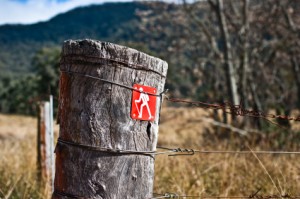by Ginny Kravitz, Deputy Editor
Clarity Takes You There
“If this isn’t it, I trust it will lead there.” I smile when I hear someone I’m coaching say those words. Brenda is at the point of trusting the clarity she has received enough to move forward. This is especially significant as she’s been at the same crossroads six times before over the course of her life. Each time Brenda chose what felt like the more predictable path instead of what captured her interest the most. This time she is choosing differently.
the clarity she has received enough to move forward. This is especially significant as she’s been at the same crossroads six times before over the course of her life. Each time Brenda chose what felt like the more predictable path instead of what captured her interest the most. This time she is choosing differently.
At some point in your life and probably more than once — when you’re younger, older, or somewhere between — you’re bound to go through the process of trying to figure it out: the answer to what will make you happy and fulfilled in your work as well as take care of you financially. What typically follows soon after the discovery of what you would like to do is a stream of doubts and worries about how realistic it is and what the chances are of success. You’ll wonder: Is this really it?
Just how much of the trail must be in view in order for you to know it’s the right direction? What Brenda realizes is that all she needs to solve for right now is the entry point: the trailhead to take that will open up her future.
What’s Enough To Go On?
The reason it made me so happy to hear Brenda’s words is that learning to trust the entry point is a critical life skill that is more important than seeking any one right answer.
Trusting the entry point often involves a leap of some kind. This is different from making impulsive choices that lack staying power. There is a due diligence to perform, a process where you can align your decisions with:
- What’s important to you (needs & values);
- Your disposition and talents (personality, skills & experiences);
- Who you are (interests, passion & purpose);
- Other criteria (situational requirements & your preferences).
While not every idea is meant to be turned into a career or life path, if the idea passes through your due-diligence process and feels right to you, it may be time for you to recognize it as your entry point and step onto the path.
What’s next is what you need to know. What’s “next after next” you don’t need to nail down. The details will work themselves out. When you go for a mountain hike, you look at a map and there are various trailheads from which to choose. You pick the one that you think will give you the best hike. Once you’re out on the trail, you can alter the route if needed.
Trusting Your Entry Point
As you consider what’s next for you, ask yourself: Do I have clarity and have I found my entry point? If not, seek input from others as you conduct your due-diligence process. Am I acting on my clarity and moving forward? If not, identify people who will encourage you and support you to take that bold step.
Trusting the entry point is acting on the clarity you have right now and letting the rest unfold.
“We must walk consciously only part way toward our goal
and then leap in the dark to our success.”
— Henry David Thoreau

[…] changing directions, often all that’s needed is to find the entry point of your new path vs. having to map out the entire route. What happens after you take that leap of […]